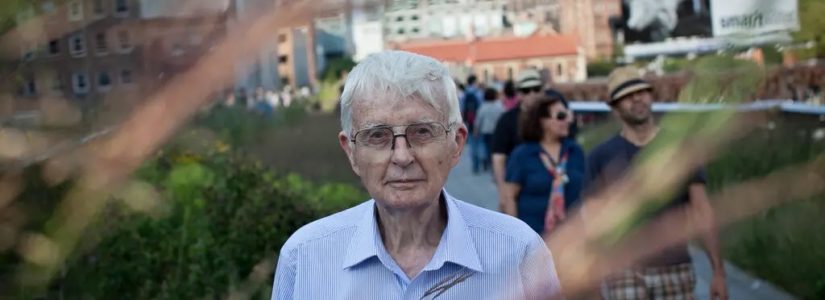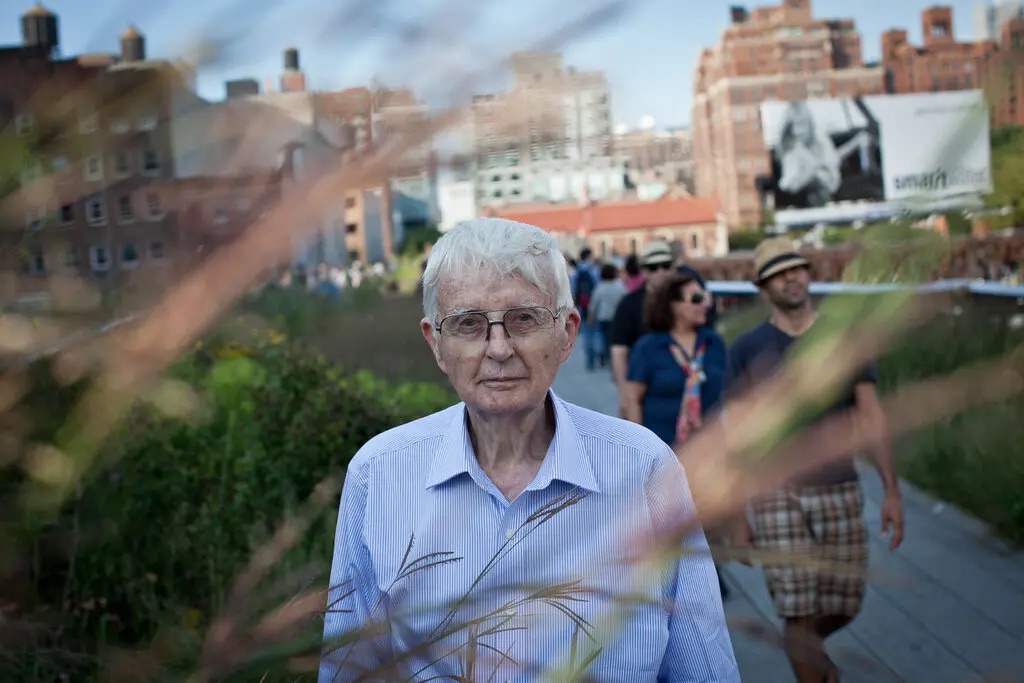
In Memoriam – Edward Stevens Kirkland (1925-2022)

By George Calderaro
Ed Kirkland was the greatest inspiration for my work as a citizen preservationist.
In the early 1990s, I had the great good fortune to be inspired and educated by Ed at frequent Certificate of Appropriateness public hearings at the New York City Landmarks Preservation Commission (LPC), where I worked. Ed was a regular, welcome presence at these hearings when he testified on behalf of the Historic Districts Council (HDC) where he served as a board member for many years.
As is the case today, HDC was among the very few civic organizations to review all of the many applications for significant alterations to designated landmarks and testify for and against those applications. Regardless of whether the project was a multibillion-dollar proposal from a “starchitect” or a rear-yard window replacement in an historic district, Ed provided thoughtful insights with charm and respect in his distinctive Boston accent. “I am genteel. I even get along with developers. While I may not agree with them, I realize they probably believe what they’re doing is right, because otherwise you can’t like yourself,” he observed.
Often Ed began his testimony by noting that he was speaking for himself, not an organization, which meant that he could draw on his vast personal knowledge and experience to comment authoritatively on applications that were not reviewed by a committee. Such heartfelt testimony was frequently his most zestful and passionate.
Ed’s public advocacy was by no means limited to his LPC appearances. For a
staggering thirty years (1982–2012), Ed served on Manhattan’s Community Board 4 (CB4) where he led the Preservation and Planning Committee. In that role he drove the campaign to designate the Chelsea West Historic District and was part of myriad efforts to protect New York’s built heritage
through landmark designation and other necessary means.
Ed successfully lobbied for enactment of the first New York City zoning plan developed by residents rather than centralized city planners, as well as the designation of the West Chelsea Historic District. In his words: “I got on CB4 with the goal of rezoning residential Chelsea. I do ask myself, ‘Would I have been more useful if I had gone into a regular career?’ Surely it would have been easier for my wife not to have to continually explain why I was not gainfully employed. But would it have been better for this community? No, I don’t think so.”
Ed co-founded the Chelsea Waterside Association and was chairman of the Hudson River Park Advisory Historic Working Group, as well as his local Chelsea block association. He was also an inadvertent founding father of the High Line after introducing founders Joshua David and Robert Hammond to each other as well as to city land use processes.
I was so impressed by the work of HDC through Ed’s near-weekly testimony at the LPC that I joined the HDC Board of Directors shortly after leaving LPC. To this day, nearly thirty years later, I am inspired by Ed whenever I testify at an LPC or other hearing where I attempt to channel some of
his indefatigable zeal to defend New York’s built heritage and unbuilt promise. I am heartened and grateful that his tremendous legacy is maintained in the work and hearts of many who Ed inspired, notably our mutual friend Pamela Wolff who devotedly cared for Ed to the end and who honors his life’s work as President of Save Chelsea.
Ed’s two oral histories with the Archive Project are available on the Archive Project website: www.nypap.org.
George Calderaro is a board member of the Friends of the Upper East Side Historic Districts, The Victorian Society New York, the 29th Street Neighborhood Association, the Historic Districts Council and the Art Deco Society New York, among other organizations. He is Founding Director of the Tin Pan Alley American Popular Music Project.